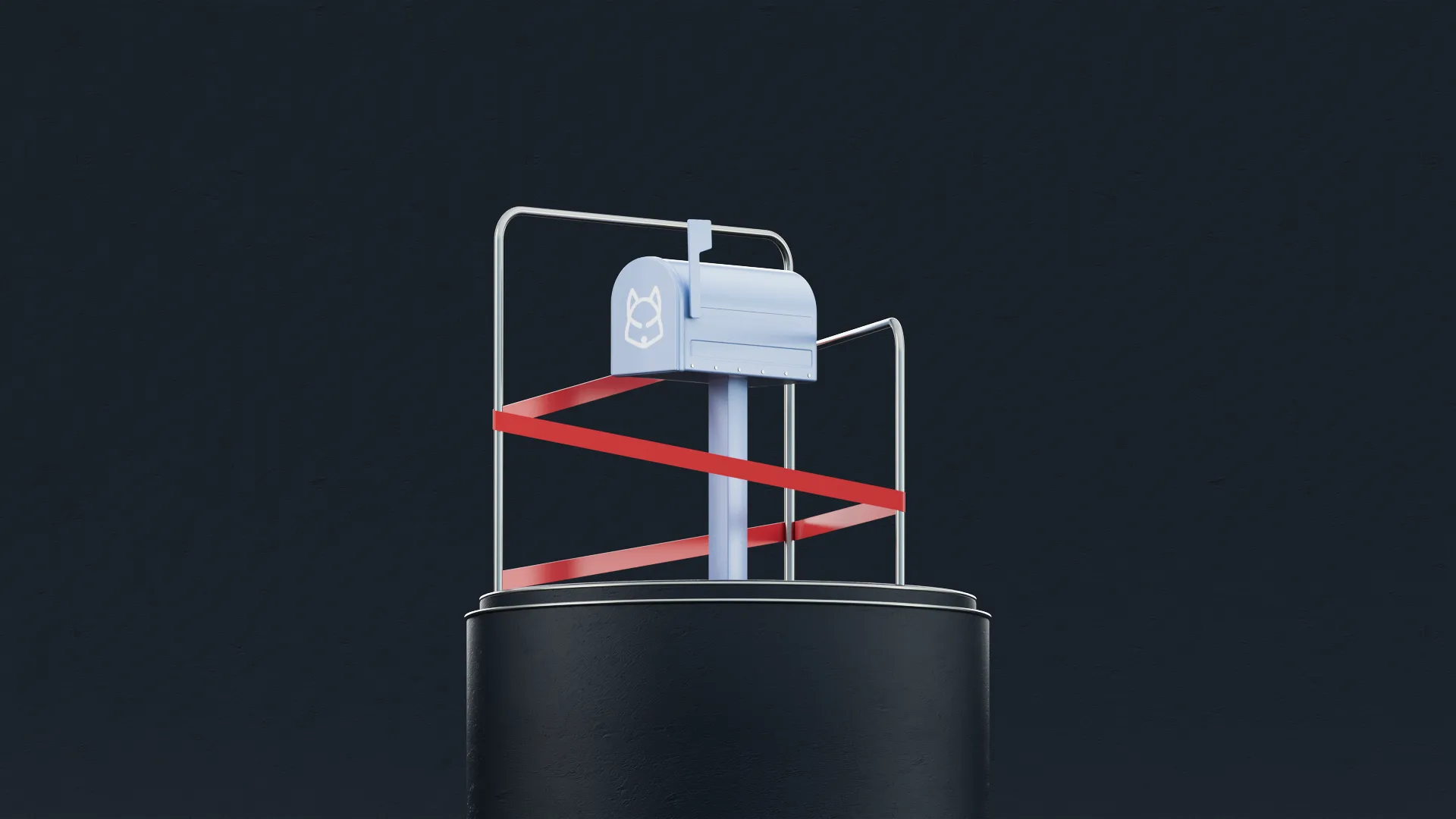Have you recently been blacklisted by the Spamhaus Blocklist (SBL)? If so, you’re not alone. An alarming 4.8 million domains were blocked by Spamhaus in 2022. And it's frustrating if you think how much money you could earn without blacklisted domain (if you have no idea, just use this free email revenue calculator to get the number).
Spamhaus collects and analyzes vast amounts of data to identify which Internet resources are potentially harmful (on average, over a 24-hour period, 3 million domains are being checked). That’s impressive, isn’t it?
Let us drop the TRUTH BOMB here: Even if you consider yourself a ‘good guy,’ there’s a chance you may have fallen victim to its strict criteria (you'll see Spamhaus blacklist reasons below).
Don’t worry, though. While de-blacklisting our clients' domain names for years, we know that blacklisting is not the dead end for your domain reputation. With this ultimate Spamhaus Blacklist Removal Guide, you can get your IP address removed from the Spamhaus Blocklist and prevent future blacklisting.
We’ll give you a detailed step of what to do whether you are an end-user, a system administrator, or have the rights of an Internet Service Provider + you'll get an illustrated algorithm of Spamhaus blocklist removal.
Let's start without further ado. 🚀
The Article Walkthrough:
What Is the Spamhaus Blocklist (SBL)
The Spamhaus Block List (SBL) is one of Spamhaus IP-based blacklists that has a real-time database of IP addresses known to be associated with sources of spam, such as spammers, spam gangs, and other malicious activity. This IP-based blacklist keeps your online experience safe by constantly monitoring and listing potentially harmful sources.
Unlike content-based blocklists, the Spamhaus Block List (SBL) doesn't consider the content or legality of an email message when evaluating it.
Unlike most real-time blacklists, Spamhaus won't clean up your records for you. Keep your data up-to-date by notifying the team of any changes and requesting removal. It's your responsibility to keep your records squeaky clean!
The database with spam sources is maintained every day, around the clock, by Spamhaus Project team members around the world.
The responsibility for complying with Spamhaus SBL policy are on:
- The senders of bulk email
- The owners of websites advertised by bulk email
- The providers of services that are used to support bulk email operation
Components of SBL Blacklist
The SBL contains the Botnet Controller List (BCL) and CSS.
The Spamhaus Composite Snowshoe (CSS) is an automatically generated compilation of IP addresses that are likely to be used for sending low-reputation emails (usually targets static spam bad guys but may also include other senders that display a risk to our users, such as those from compromised hosts).
The Botnet Controller List (BCL) is a specialized subset of the Spamhaus Block List that is an advisory "drop all traffic" list consisting of single IPv4 addresses that are used by cybercriminals for the purpose of controlling bots or infected computers (bots).
What Is Spamhaus "ZEN"
ZEN is the combination of all three IP-based blacklists into one single powerful and comprehensive blocklist to speed up query times.
It contains the SBL, CSS, XBL and PBL blocklists.
💡 A delightful story: It's truly remarkable that the Spamhaus founder, Steve Linford, named the Spamhaus Block List after his beloved German Shepherd, Zen. Not only does this honor Zen's memory, but it also is quite fitting since Zen faithfully guarded the Spamhaus base in England for many years. So, metaphorically, Zen continues to guard your networks and customers even now.
So, if you get blocked by Spamhaus "ZEN," you may get the following return codes to learn about the issue and proceed with the Spamhaus Zen blacklist removal:
Checking Your IP Status
So, as you may guess, the first step is checking that your IP is really listed in SBL ( or any other Spamhaus list).
FYI: SBL listings are immediate, The SBL does not provide warnings or have a grace period. So, if you don’t see your IP after checkup, it means that it is not listed.
❗ After an IP address has been blacklisted in the SBL, the sender should receive a bounce-back message (only Regional Internet Registries (RIR) or the owner of the respective top-level network). This helps ensure that the sender is aware of the problem and can take the necessary steps to rectify it.
Use this official this official this official Spamhaus blacklist checker to search for the potential listing.
You’ll find out:
- Why you were listed in the first place
- What do you need to do to ensure that you’ll not be listed again
- Request your IP removal following the steps described below
Most Common Spamhaus Blacklist Reasons (SBL Listing Policy)
If you wonder about Spamhaus blocking emails reasons, here is a list of criteria that define the SBL listing policy (including but not limited to).
Once your IP meets the criteria, it is… yes, you got it, listed!
☐ Your IP is a source of unsolicited bulk email (SPAM)
☐ You apply snowshoe spamming technique(a sending technique used to avoid email filters) e.g. using fake names and identities, nonsense domains or hostnames
☐ Your IP is associated with spam hosting (spam-advertised websites or used by spammers or malware operations)
☐ You are engaged in spam or malware operations listed by Spamhaus
☐ Your IP hosts services that support spam or malware operations: bulletproof hosting, spamware, scrapers, email list providers, email appenders.
☐ Your IP is deemed to be a security risk to Spamhaus SBL users (botnet controllers, malware, phish sites, ransomware, hacking attempts)
We also recommend checking the full list of SBL Listing Criteria.
Spamhaus Blacklist Removal Guide (+ Quick Algorithm Map)
The removal procedure will depend on which relation you have to the blacklisted IP.
Good to know! The Spamhaus Block List (SBL) removal is completely free of charge, so any offers to remove your IP address from the SBL for a fee are scams. Spamhaus has no affiliation with any third party offering services related to the SBL.
Note that the removal procedure is also described at the bottom of every SBL listing page.
Let’s dive into the details of each case.👇
How to get removed from Spamhaus blacklist as an end-user
As an end-user, you can’t request delisting. If the request does not come from an authoritative source (Internet Service Provider) Spamhaus will decline it and will want to hear from the top-level network.
What you can do is to contact your system administrator, ISP, or ESP, and ask them to address the issue as soon as possible. Also, you can make sure that you don’t violate the listing criteria described above in the future.
And just wait for the issue to be solved.
How to get removed from Spamhaus blacklist as a system administrator
As a system administrator, you already have the responsibility to solve the issue for the SDL listing. So, follow these steps:
- STEP 1: Locate the reason for the listing using the official using the official Spamhaus blacklist checker.
- STEP 2: Address the issue for listing.
- STEP 3: Contact the Abuse/Security desk of your Internet service provider, describe in detail the situation and the issue, and then describe HOW you solved the problem (with as much detail as possible)
- STEP 4: Ask to send the removal request.
The consequences of neglecting an SBL listing can be severe. If a user or network ignores SBL listings for an extended period of time, Spamhaus may escalate the listing to block extended ranges of the network, or even the entire network or networks related by ASN or RIR assignment. It is, therefore, essential to address SBL issues as soon as they arise and take the necessary steps to delist before it reaches this stage.
How to get removed from Spamhaus blacklist as an Internet Service Provider
If you have the rights of an Internet Service Provider, then you are the first party responsible for delisting your IP.
- STEP 1: Locate the reason for the listing using the checker. Also, as an Internet Service Provider, you should automatically receive a bounce-back message after your IP is blacklisted.
- STEP 2: Make sure that the issue for the listing has been thoroughly addressed by all the parties. Double check again… and then again.
- STEP 3: Now, you are all set to send the request to the SBL Removal Team.
This can be done by clicking the "Contact the SBL Team" link on the bottom of your SBL listing page.
So, here’re important things to notice to make it work:
- The problem should be fully resolved (if not, address it sufficiently again).
- Detailed explanations of how exactly the issues were addressed and resolved are required. Not only the final results but the process. This is the official Spamhaus requirement.
- You should include the contact email address for the SBL Removals Team and the information that its email system requires (that is located at the bottom of every SBL listing page) in the subject header of your removal request.
And, now, just wait for the Spamhaus blacklist removal.
FYI: Even if you are an innocent actor, the SBL Removals Team will still have a throughout, strict check. And it’s not surprising, considering how many removal requests come from really “bad actors.”
Good news — the SBL Removals Team usually addresses and replies to valid removal requests within the first 24 hours.
Preventing Future Spamhaus Blacklisting
With an 80% increase in the number of compromised domains listed in 2022, it’s more important than ever that everyone takes the necessary steps to protect their domain(s).
To help prevent further Spamhaus blocking emails, we recommend:
- Implementing comprehensive security measures to maintain your domain reputation (Guide from Spamhaus Team).
- Read the Spamhaus Resource Center for the latest advice on cybersecurity
- It takes constant monitoring and adjusting to stay afloat. Utilize high-end professional assistance when trying to locate and solve deliverability issues. A comprehensive approach to email deliverability with the tools like Folderly will help to stay assured and fix issues before they turn into major problems.
It can be difficult to settle on a single email deliverability solution. Nobody likes to throw away time, energy, and resources on useless tools. Try out Folderly for yourself to see whether it can become your perfect one-stop shop. With a 30-day free trial, you get access to all the tools, can try them firsthand, and can see how your deliverability rates gradually increase.
Sounds amazing, right? The only drawback: You'll lose the excuse to delay your email outreach due to low deliverability rates. This could lead to a surge in your motivation to consistently engage with both cold and warm leads, driving your daily email productivity to new heights. 🚀
- Protect the server from hijackers and install up-to-date security measures.
- Use VPNs cautiously and only as a short-term solution, not a preventive measure.
Bottom Line: It’s not so scary… unless you are a spammer.
So do you need to fear it? Well, no, but life is unpredictable, and sometimes, even true email enthusiasts’ IPs might end up blocked by Spamhaus (or any other blacklist; and that's why we recommend also check our main guide on how to remove IP from blacklist).
IP blacklists are more restrictive, but they require a higher standard of mistakes to get listed. To keep your IP out of the blacklist, be sure to understand Spamhaus blacklist reasons that can lead to an IP being listed and address the preventive measures described above.
And cheers to your blacklist-free year!

